Abstract
1 Residual effects in man of methaqualone hydrochloride (400 mg) were studied by adaptive tracking and by reaction time. Performance was measured at 10 h, 13 h, 16 h, 19 h and 34 h after the overnight ingestion of the drug. There was no evidence of impaired performance on adaptive tracking from 10 h to 19 h, but enhanced performance (P = 0.001) was observed 34 h after ingestion. With reaction time an increase (P = 0.01) was observed 10 h and a decrease (P = 0.05) was observed 19 h after ingestion. 2 Effects in the monkey (Macaca mulatta) of methaqualone (20 and 30 mg/kg body weight) were studied by a delayed matching task in which total response time was measured. No consistent effects on matching behaviour or on total response time were observed 2 h after intraperitoneal injection. 3 The studies suggest that methaqualone hydrochloride may be a valuable hypnotic for occasional use by persons involved in skilled activity.
Full text
PDF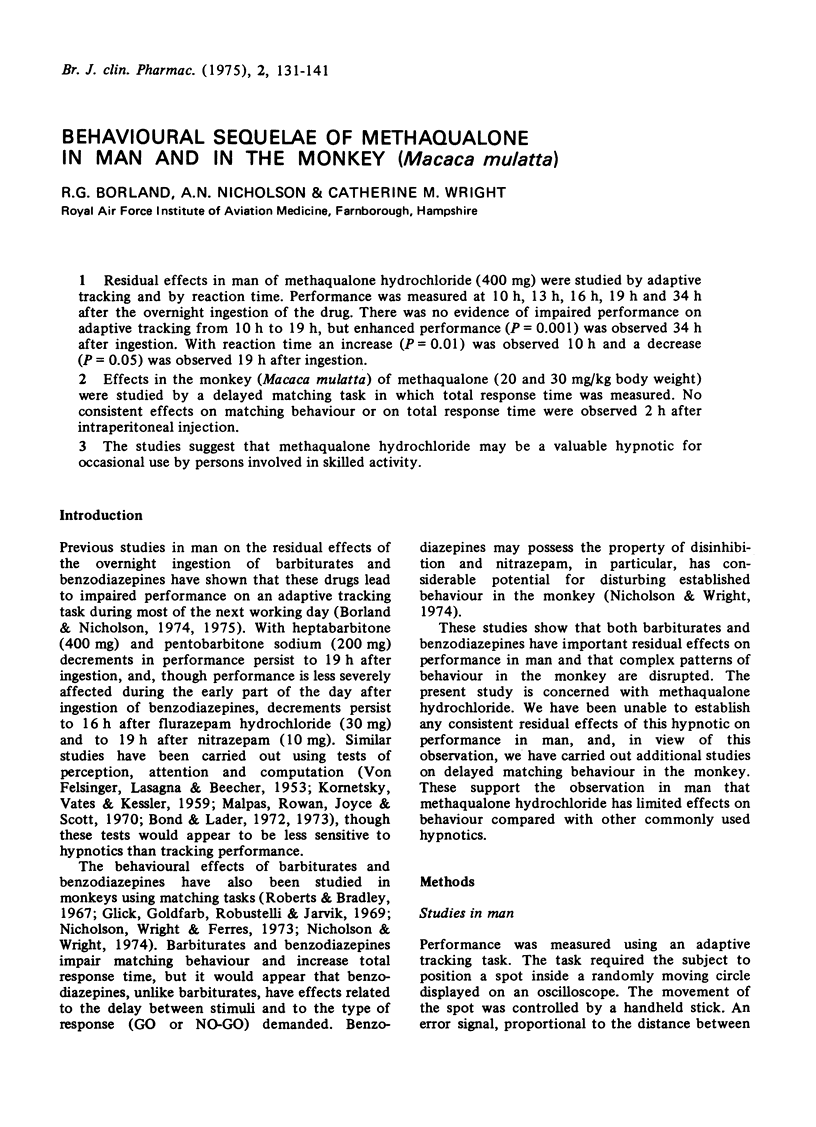
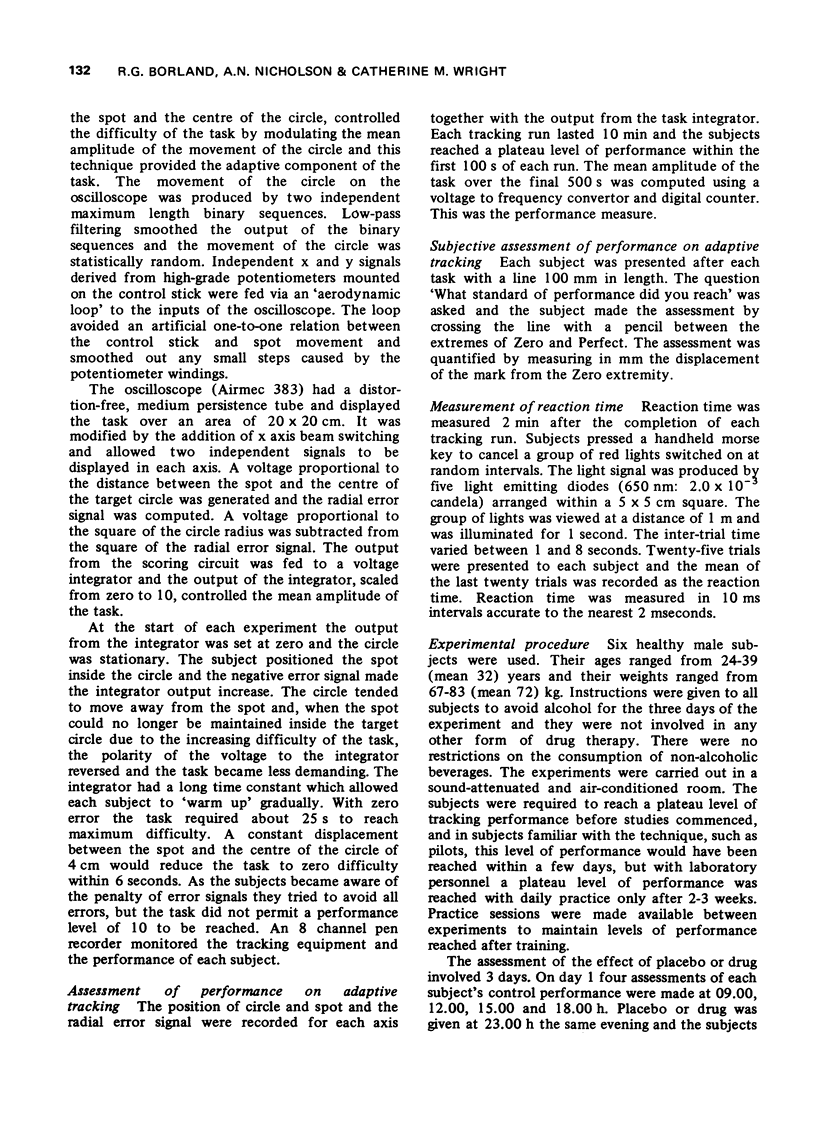
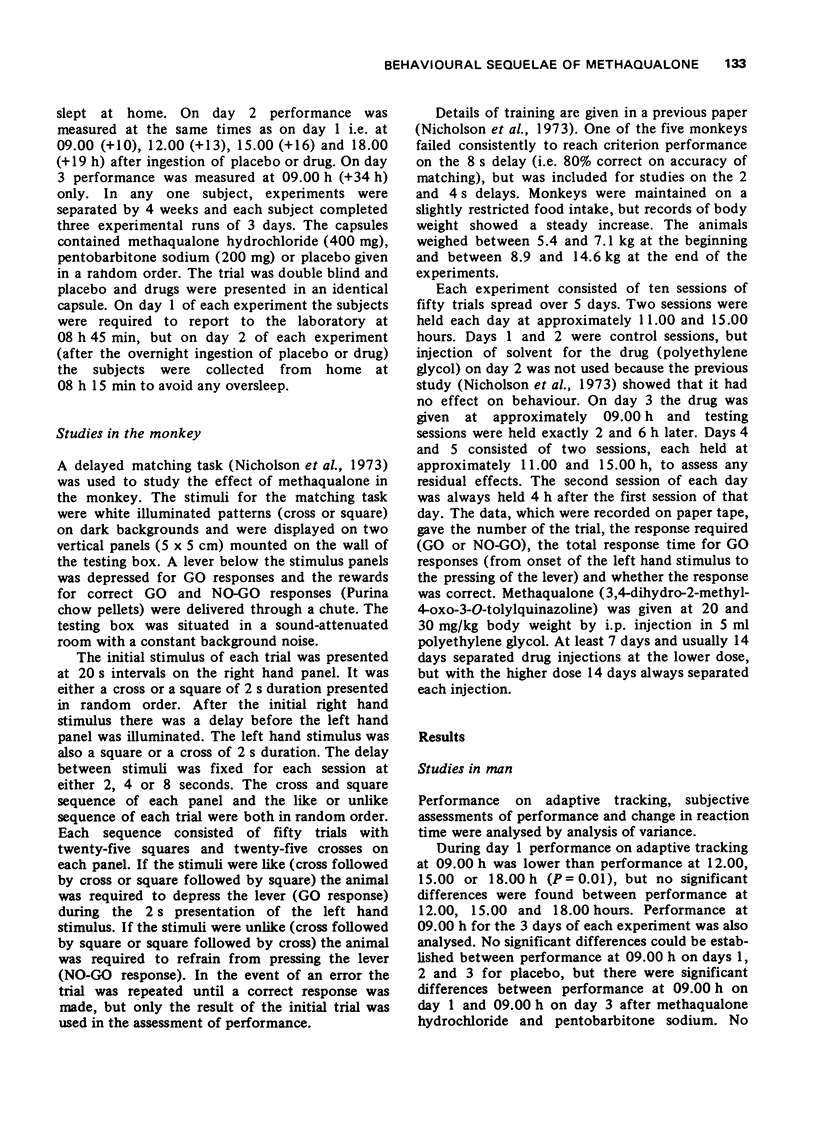
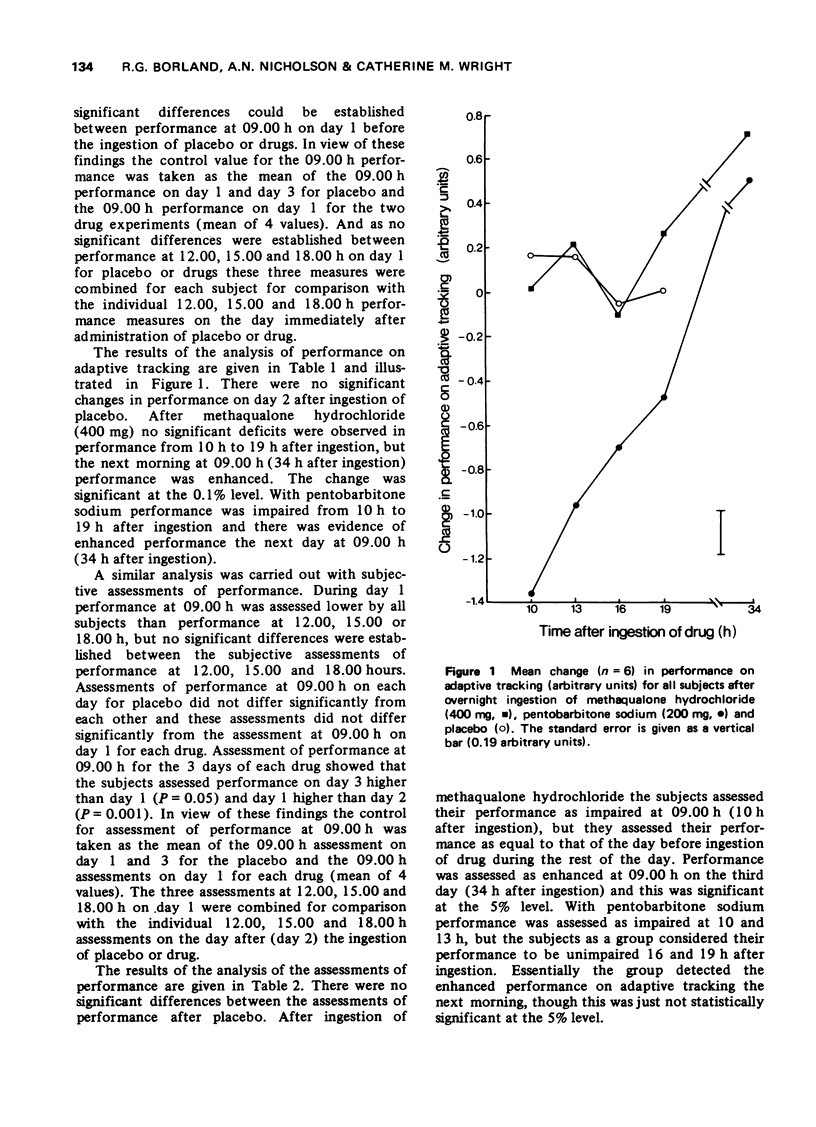
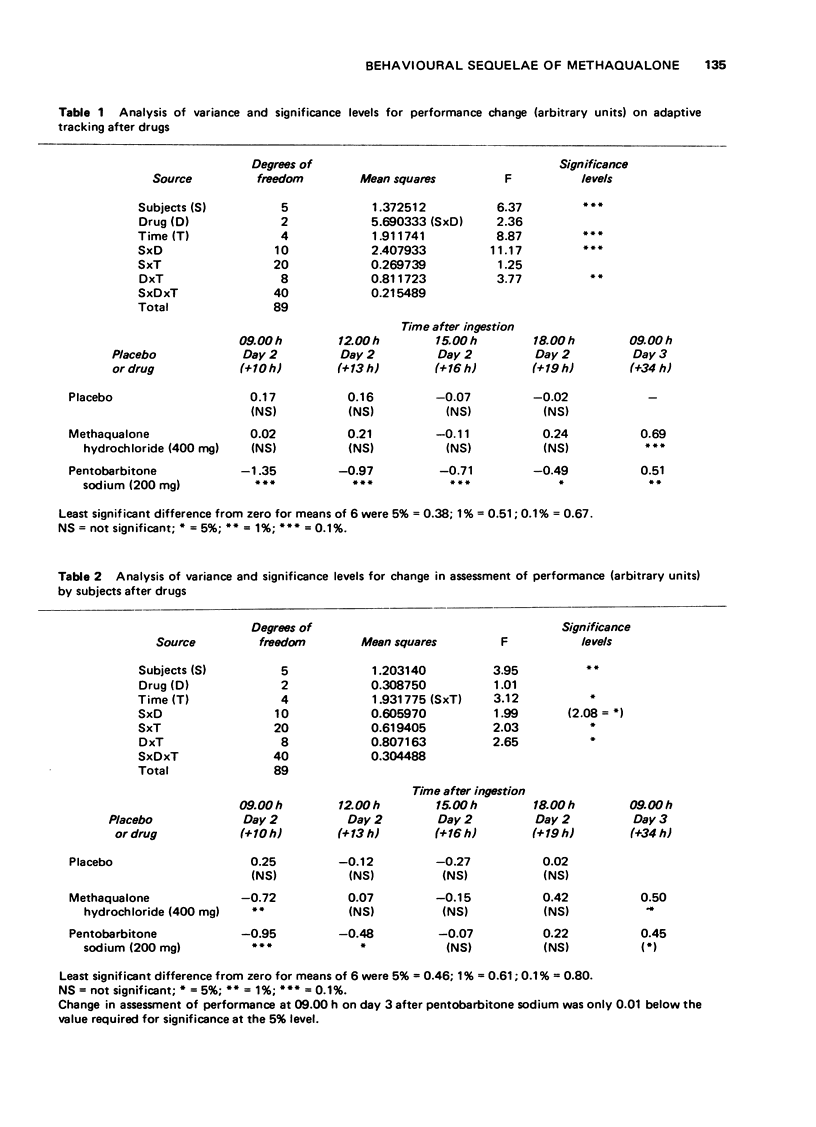
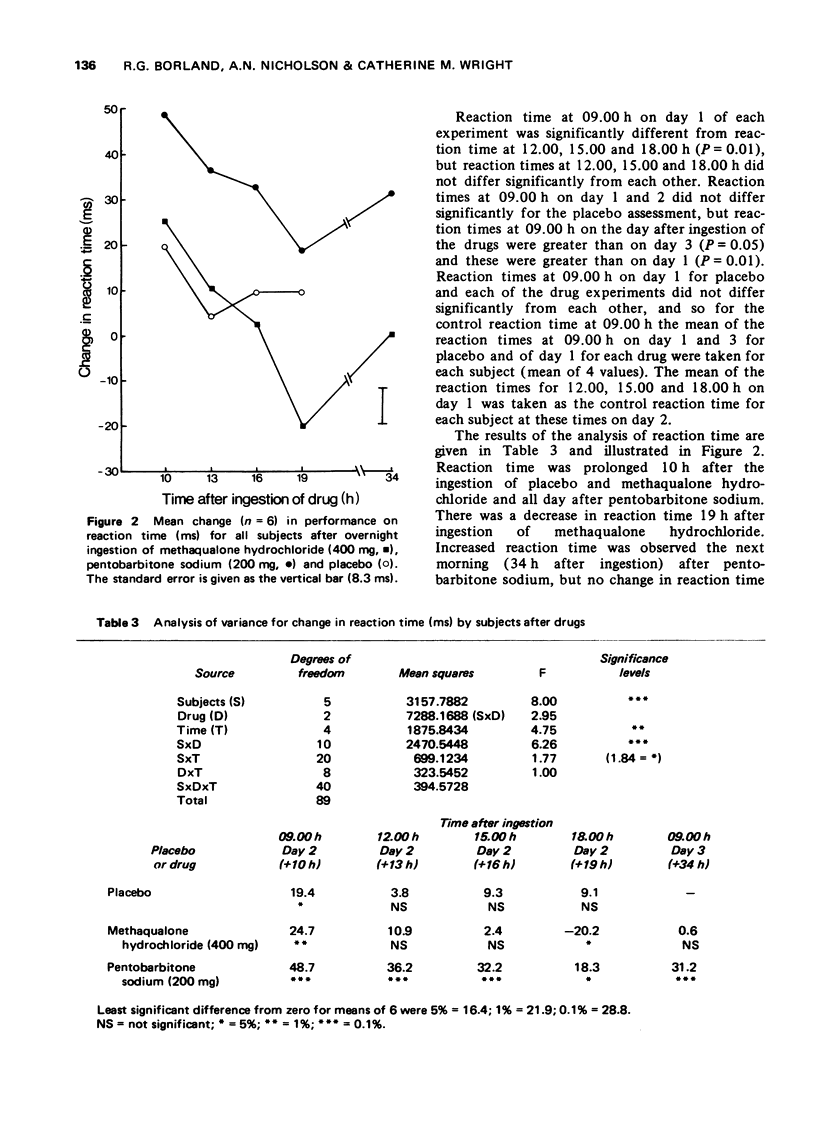
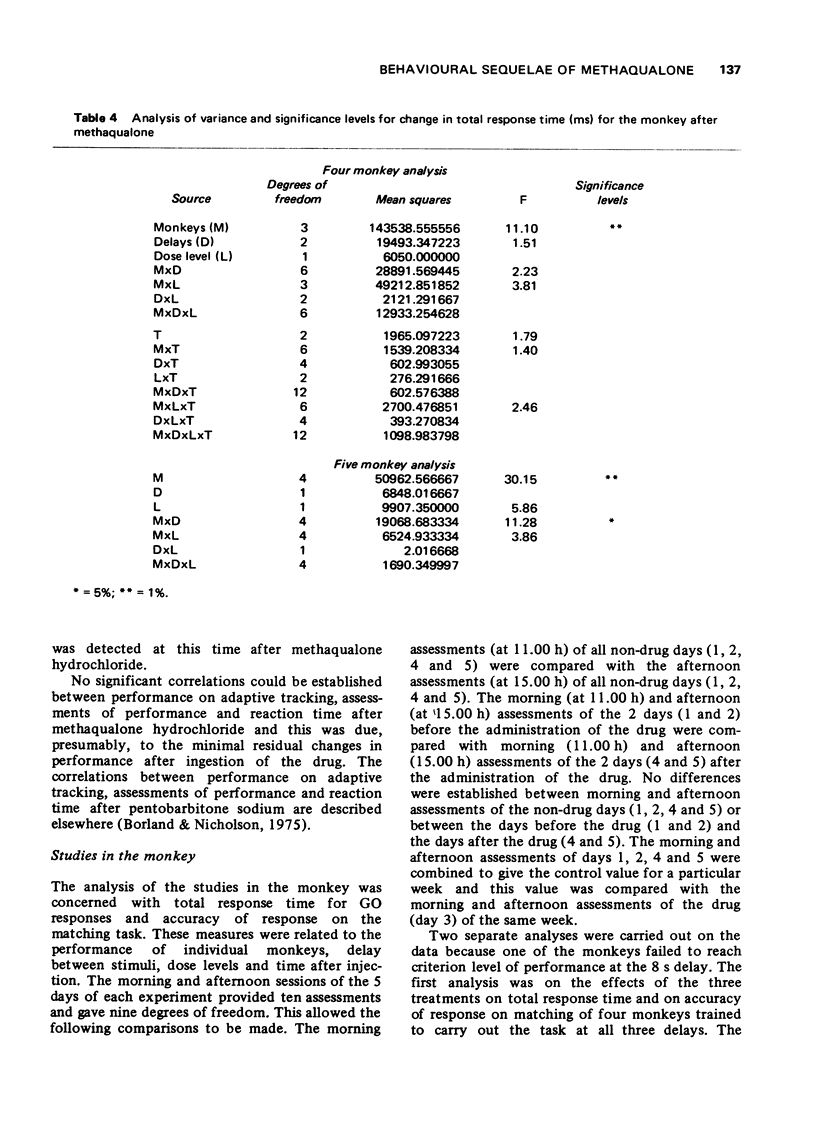
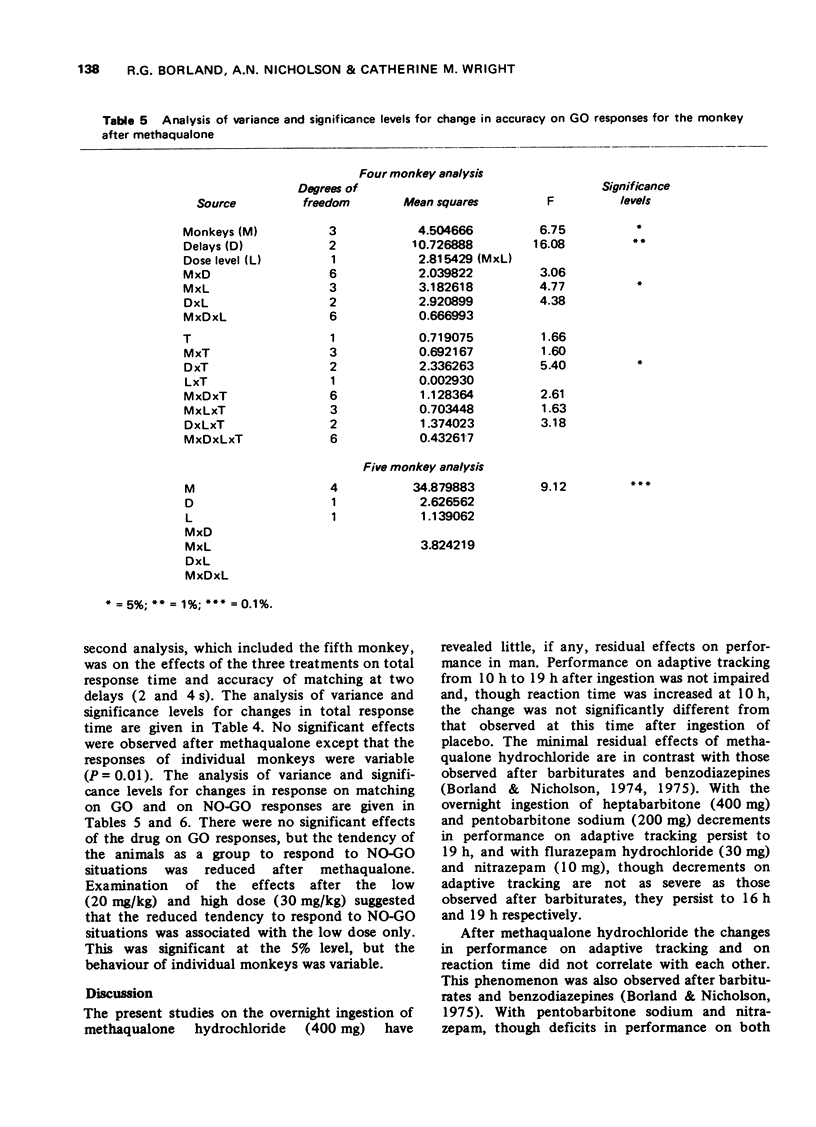
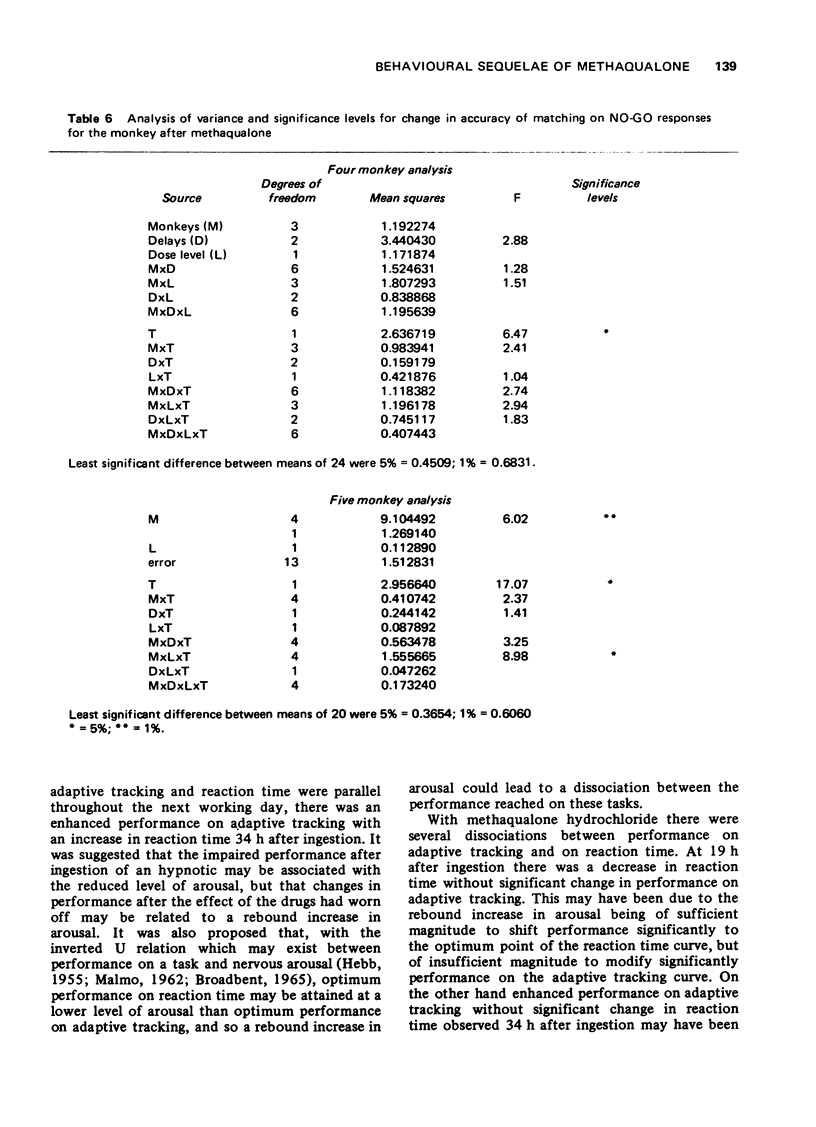
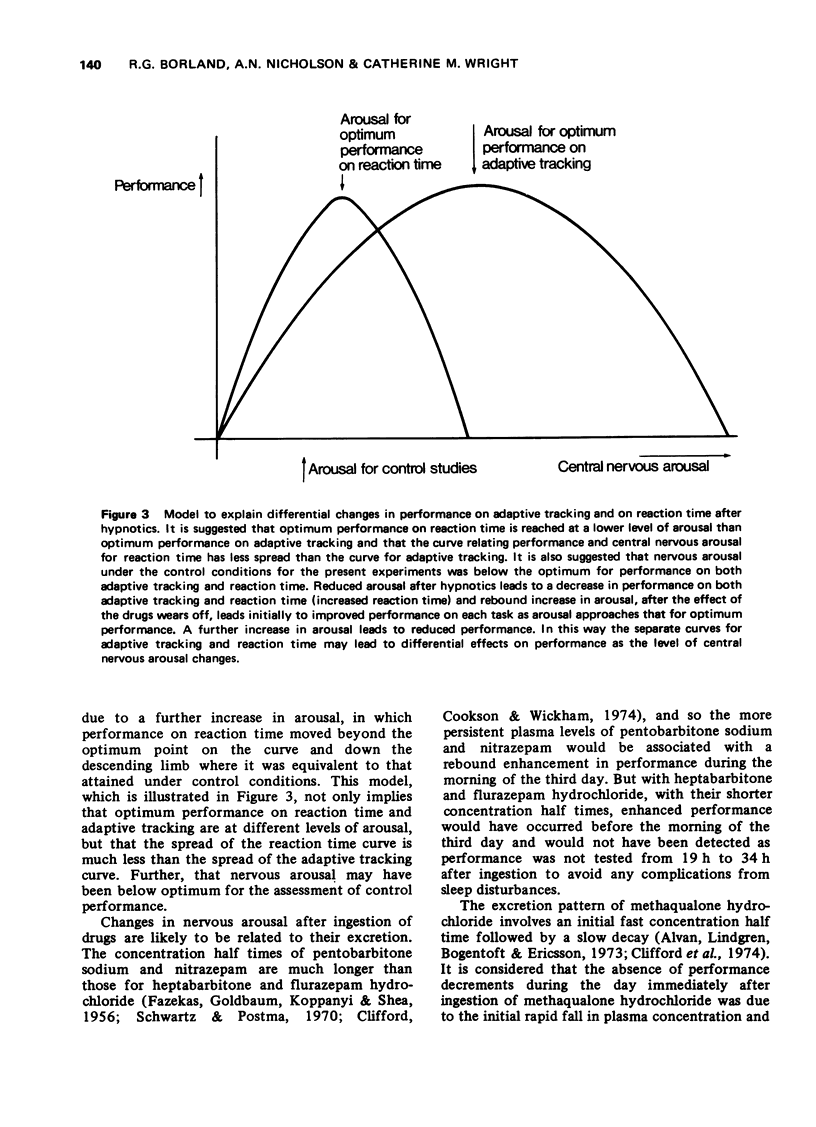
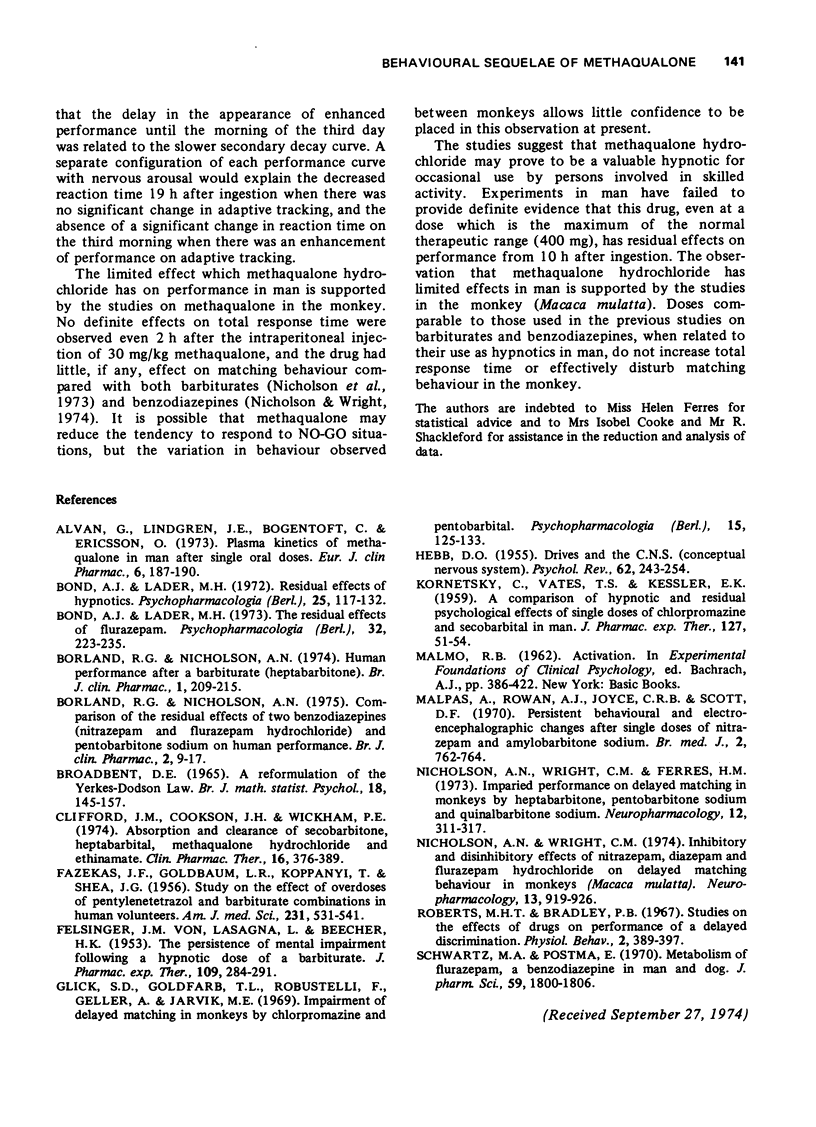
Selected References
These references are in PubMed. This may not be the complete list of references from this article.
- Alván G., Lindgren J. E., Bogentoft C., Ericsson O. Plasma kinetics of methaqualone in man after single oral doses. Eur J Clin Pharmacol. 1973 Oct;6(3):187–190. doi: 10.1007/BF00558284. [DOI] [PubMed] [Google Scholar]
- Bond A. J., Lader M. H. Residual effects of hypnotics. Psychopharmacologia. 1972;25(2):117–132. doi: 10.1007/BF00423189. [DOI] [PubMed] [Google Scholar]
- Bond A. J., Lader M. H. The residual effects of flurazepam. Psychopharmacologia. 1973 Sep 28;32(3):223–235. doi: 10.1007/BF00422145. [DOI] [PubMed] [Google Scholar]
- Borland R. G., Nicholson A. N. Comparison of the residual effects of two benzodiazepines (nitrazepam and flurazepam hydrochloride) and pentobarbitone sodium on human performance. Br J Clin Pharmacol. 1975 Feb;2(1):9–17. doi: 10.1111/j.1365-2125.1975.tb00465.x. [DOI] [PMC free article] [PubMed] [Google Scholar]
- Clifford J. M., Cookson J. H., Wickham P. E. Absorption and clearance of secobarbital, heptabarbital, methaqualone, and ethinamate. Clin Pharmacol Ther. 1974 Aug;16(2):376–389. doi: 10.1002/cpt1974162376. [DOI] [PubMed] [Google Scholar]
- FAZEKAS J. F., GOLDBAUM L. R., KOPPANYI T., SHEA J. G. Study of the effect of overdoses of pentylenetetrazol and barbiturate combinations in human volunteers. Am J Med Sci. 1956 May;231(5):531–541. doi: 10.1097/00000441-195605000-00006. [DOI] [PubMed] [Google Scholar]
- Glick S. D., Goldfarb T. L., Robustelli F., Geller A., Jarvik M. E. Impairment of delayed matching in monkeys by chlorpromazine and pentobarbital. Psychopharmacologia. 1969;15(2):125–133. doi: 10.1007/BF00407045. [DOI] [PubMed] [Google Scholar]
- HEBB D. O. Drives and the C.N.S. (conceptual nervous system). Psychol Rev. 1955 Jul;62(4):243–254. doi: 10.1037/h0041823. [DOI] [PubMed] [Google Scholar]
- KORNETSKY C., VATES T. S., KESSLER E. K. A comparison of hypnotic and residual psychological effects of single doses of chlorpromazine and secobarbital in man. J Pharmacol Exp Ther. 1959 Sep;127:51–54. [PubMed] [Google Scholar]
- Malpas A., Rowan A. J., Boyce C. R., Scott D. F. Persistent behavioural and electroencephalographic changes after single doses of nitrazepam and amylobarbitone sodium. Br Med J. 1970 Jun 27;2(5712):762–764. doi: 10.1136/bmj.2.5712.762. [DOI] [PMC free article] [PubMed] [Google Scholar]
- Nicholson A. N., Wright C. M., Ferres H. M. Impaired performance on delayed matching in monkeys by heptabarbitone, pentobarbitone sodium and quinalbarbitone sodium. Neuropharmacology. 1973 Apr;12(4):311–317. doi: 10.1016/0028-3908(73)90090-7. [DOI] [PubMed] [Google Scholar]
- Nicholson A. N., Wright C. M. Inhibitory and disinhibitory effects of nitrazepam, diazepam and flurazepam hydrochloride on delayed matching behaviour in monkeys (Macaca mulatta). Neuropharmacology. 1974 Nov;13(10-11):919–926. doi: 10.1016/0028-3908(74)90083-5. [DOI] [PubMed] [Google Scholar]
- Schwartz M. A., Postma E. Metabolism of flurazepam, a benzodiazepine, in man and dog. J Pharm Sci. 1970 Dec;59(12):1800–1806. doi: 10.1002/jps.2600591220. [DOI] [PubMed] [Google Scholar]
- VON FELSINGER J. M., LASAGNA L., BEECHER H. K. The persistence of mental impairment following a hypnotic dose of a barbiturate. J Pharmacol Exp Ther. 1953 Nov;109(3):284–291. [PubMed] [Google Scholar]


